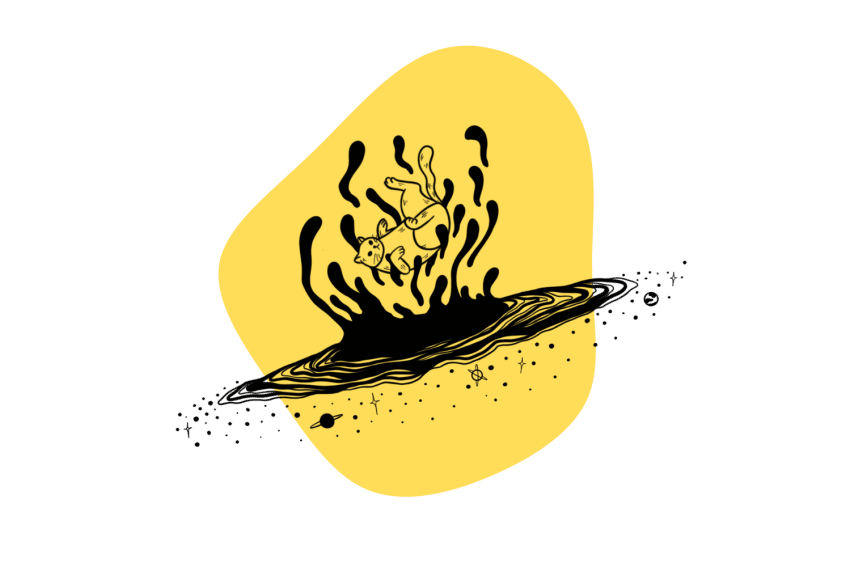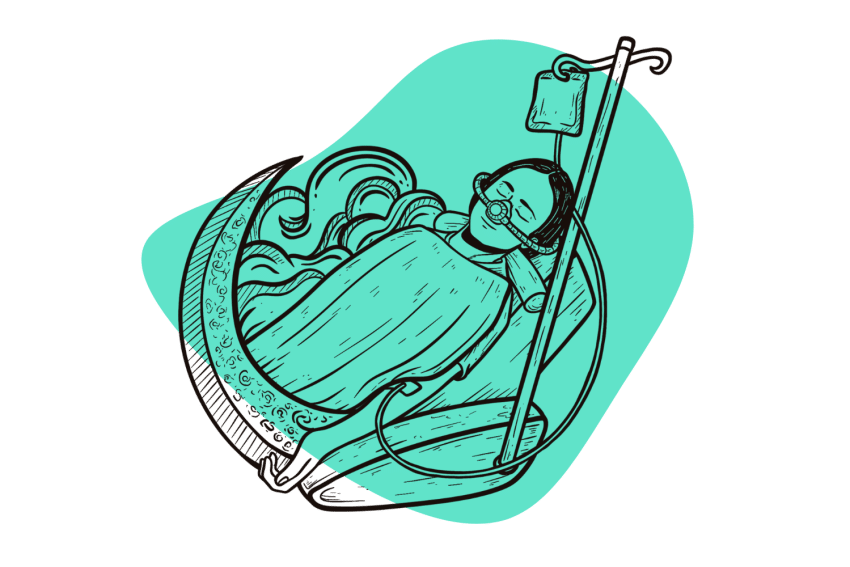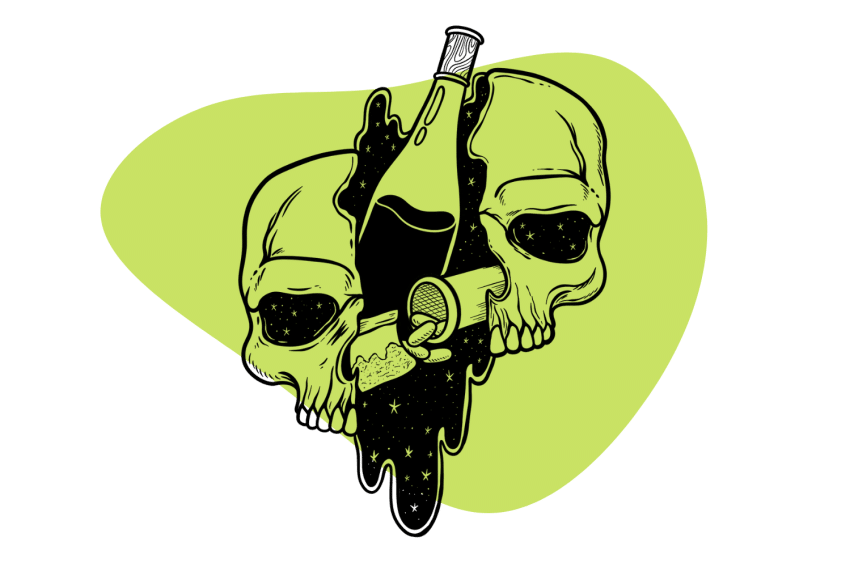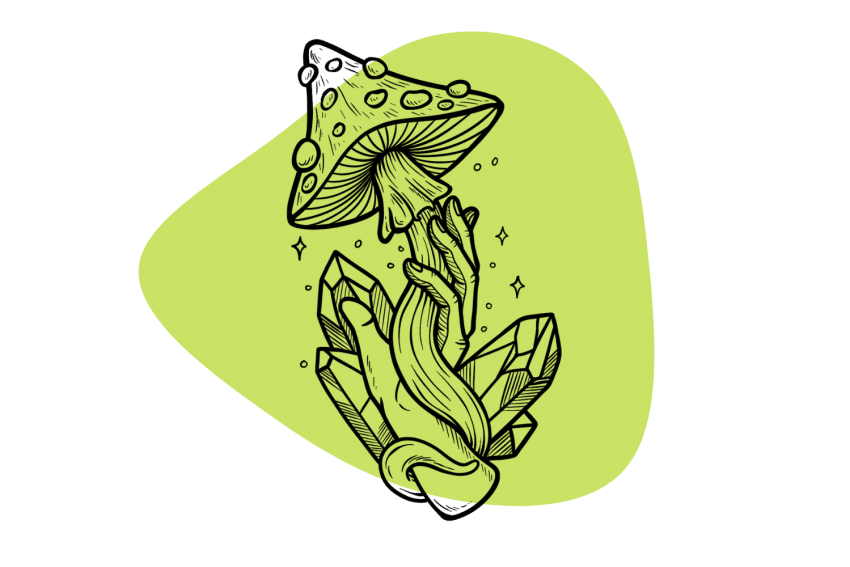How Harm Reduction Saves Lives & Builds Healthier Communities
Harm reduction approaches like safe injection sites, overdose prevention education, and opioid substitution therapies save lives and improve public health outcomes. By prioritizing these strategies, we can make significant strides toward reducing the concerns associated with drug use.
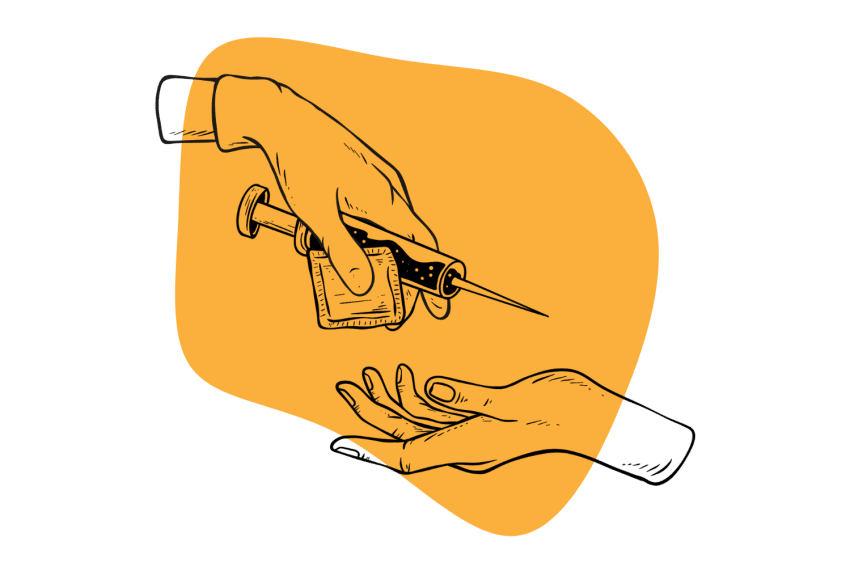
A few years ago, my brother-in-law’s friend was using heroin with him in his car and saved his life with a couple of quick doses of naloxone injections in his thigh. He was overdosing, and this was the only thing that could have saved him.
Luckily, the drug responsible for saving my brother-in-law’s life was already in the glove compartment of the car. A local harm reduction specialist in Chicago had brought the drug to them to ensure they had a reliable antidote to an opioid overdose.
(If you happen to also be in the Chicago area, here’s a map of everywhere you can currently pick up naloxone.)
Several stories like this underscore the life-saving potential of harm-reduction strategies. Increasing education and understanding of the range of approaches for reducing the harms associated with drug use can save lives and generate positive public health outcomes.
The Ultimate Harm Reduction Guide: An Overview
In this guide, we’ll cover the science behind harm reduction and share the 4 key principles it operates on:
- Meeting people where they are
- Pragmatism around drug use and the people who use drugs (PWUD)
- Respect for personal autonomy
- Reducing stigma
Some of the key ways harm reduction advocates are calling for this include:
- Education on drug use and abuse
- Fentanyl testing strips
- Needle exchange programs
- Safe injection sites
- Medications for opioid use disorder (MOUD)
- Overdose prevention education
- Safer sex education
- Decriminalizing and/or legalizing drugs
Several of these harm-reduction measures help work within the system we have but we could render them irrelevant through the simple act of legalization. While we consider the current crisis to revolve around opioids, it’s really a problem of prohibition.
Legalization and regulation of drugs would ensure people are receiving the substance they want and the education on how to use it safely. The answer to overdose should be stopping overdoses, not putting people who use drugs leading to overdose, in jail or forced treatment.
After going over legalization, we’ll cover some of the key figures and organizations in harm reduction. Namely:
- The PWUD themselves, often responsible for ensuring the safety of fellow PWUDs.
- DanceSafe
- Dr. Alex Wodak and the National Drug and Alcohol Research Centre and Australian Society of HIV Medicine which he helped establish.
- DrugsData.org
- Dan Bigg who first brought Narcan to the streets along with his foundation, Chicago Recovery Alliance
- The North American Syringe Exchange Network (NASEN)
- Dr. Gabor Maté
- Local harm reduction organizations looking to make a difference around you.
Finally, we’ll discuss the history of harm reduction which arrives in America around the late 80s — and how measures the public typically pushes for involve solving issues concerning white families.
Let’s dig into harm reduction, what it means, and how it helps.
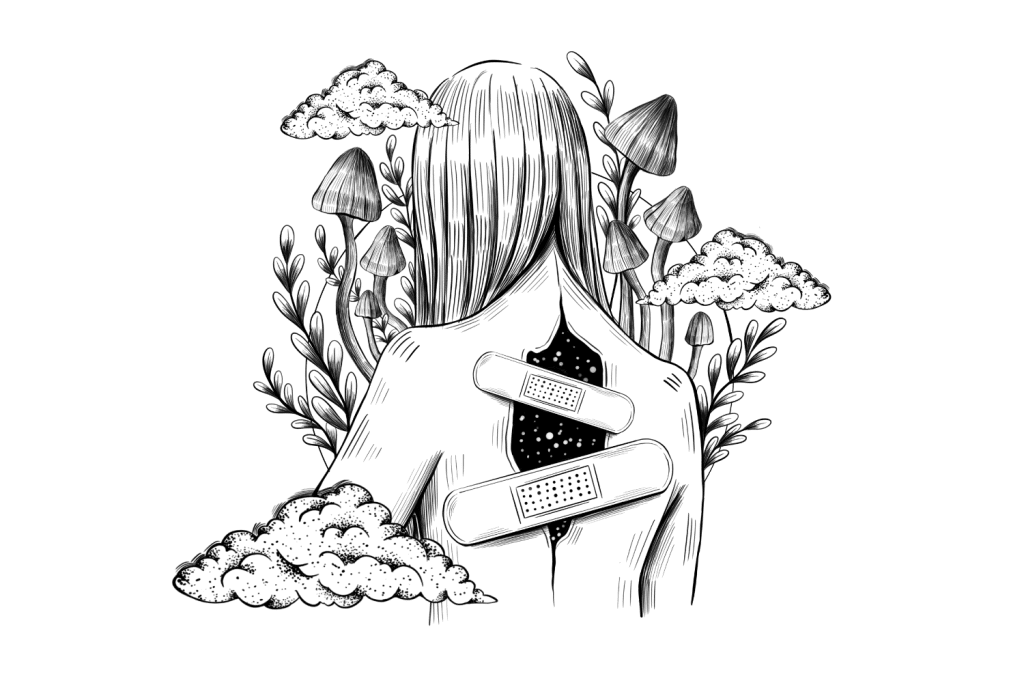
What Is Harm Reduction?
Harm reduction revolves around a policy of ensuring the safety of PWUD. Services stress saving lives, protecting health and safety, and promoting dignity over criminalization and stigma.
After all, people have been using drugs for as long as there have been people. No government has effectively stopped its population from using drugs, they only destabilize and worsen the supply of drugs while stigmatizing and endangering users.
Instead of insisting on abstinence, harm reduction advocates recognize people can’t always do “cold turkey.” Withholding help from them only exasperates health, economic, racial, and ethnic inequities while increasing the likelihood of a harmful supply.
Principles of Harm Reduction
Harm reduction seeks to reduce the harms of drug use and puts the health and well-being of PWUD first. The main principles of harm reduction revolve around:
- Meeting people where they’re at instead of requiring them to come to you
- Pragmatic approaches to drug use as opposed to criminal or emotional ones
- Respecting the personal autonomy of PWUD
- Encouraging a nonjudgemental approach to care for PWUD
Let’s examine each of these a bit closer:
Meeting People Where They Are At
Not every person who uses drugs is in the same place socially, culturally, or economically. Some may personally be ready to try MOUD to ease withdrawals and curb cravings, while others may not be ready for such a drastic measure.
Several opioid-dependent individuals use the drug as a result of poor access to medication for pain-related concerns. When health care professionals suspect a person is “abusing” opioids, they may cut them off even if their patients have a legitimate cause for them.
The point is, people use drugs — they always have and they always will. Fighting to bring everyone into your form of the societal fold is a losing battle and it’s much easier to meet them where they are and provide them with the tools they need.
Providing clean needles and syringes along with safe injection sites can ensure people are using drugs with significant reductions in the potential harm. Mobile naloxone, clean needle, and fentanyl test strip programs are one example of meeting people where they are at.
Pragmatism
Pragmatism focuses on building harm reduction programs to address the practical problems of drug use. We’ve never been able to stop drug use but we might lower the spread of disease, overdose, sexually transmitted diseases, and unhealthy pregnancies.
An emotional response to the spread of disease through sharing needles is to ban using drugs. Pragmatic responses, by contrast, would revolve around needle exchanges, supervised consumption sites, and other ways of ensuring people have clean needles to use.
When we address the problems with practical solutions we can ease some of the harm caused by drug dependency.
Respect for Personal Autonomy
Humans can decide for themselves whether they want to use drugs and we should make sure they can do so as safely as possible. While you can’t prevent people from seeking out heroin or fentanyl, you can help them educate themselves on their drug of choice before taking it.
Education on safe use and practical measures for reducing harm instead of restricting the rights of PWUD empowers them to decide on their drug use for themselves. Recovery is about being there for people when they decide to give up drugs, harm reduction is about being there regardless of the personal choices of PWUD.
Encouraging a Nonjudgmental Approach
The harm reduction philosophy does not place moral judgment on PWUD. Instead, it focuses on empowering them to live a long, healthy life. This principle emphasizes a compassion-based approach to reducing stigma and offers tools to safely consume drugs without requiring treatment.
Instead of the shame and embarrassment society places on drug use, harm reduction focuses on building trust and helping PWUD. Drug use is often the result of a complex mixture of social, economic, and cultural situations, not a moral failing.
Harm Reduction Strategies
Components of harm reduction include strategies like:
- Educating consumers about the drugs they’re consuming and tools to ensure safe usage
- Distribution of vital tools like fentanyl testing strips and Narcan/naloxone
- Safe injection sites
- MOUD
- Safe sex supplies and the empowerment and education of consent
In 2022, even the Office of National Drug Control Policy stated in their 2022 “Drug Control Strategy” report (which includes a signed letter from President Biden):
Harm reduction programs are vital, as they provide resources and connection to people who are at the highest risk for overdose and poor health outcomes, including conditions often associated with injection drug use such as blood-borne diseases and heart conditions [these actions] will save lives, improve health, and likely have a favorable economic benefit to society
Education
Educating PWUD on safe practices and what to do in the event of an emergency empowers them to strengthen their community instead of asking them to leave it. People often have a misconception about drug users that they’re looking to get high on whatever they can get their hands on.
In actuality, they often desperately want to know as much as they can about the drug they’re trying to take. However, in the age of prohibition, you can’t simply walk up to a vendor on the street and feel safe handing over a small quantity of an illegal drug to ask for a test.
States often place heavy restrictions on harm reduction measures but there’s no restriction on education. Harm reduction activists should view their understanding of drugs as being a foundational aspect of their work.
Keeping up to date with contamination trends, new drugs on the market, and combatting new issues as they arise, and conveying those to the PWUD is one of the most crucial components of any harm reduction work.
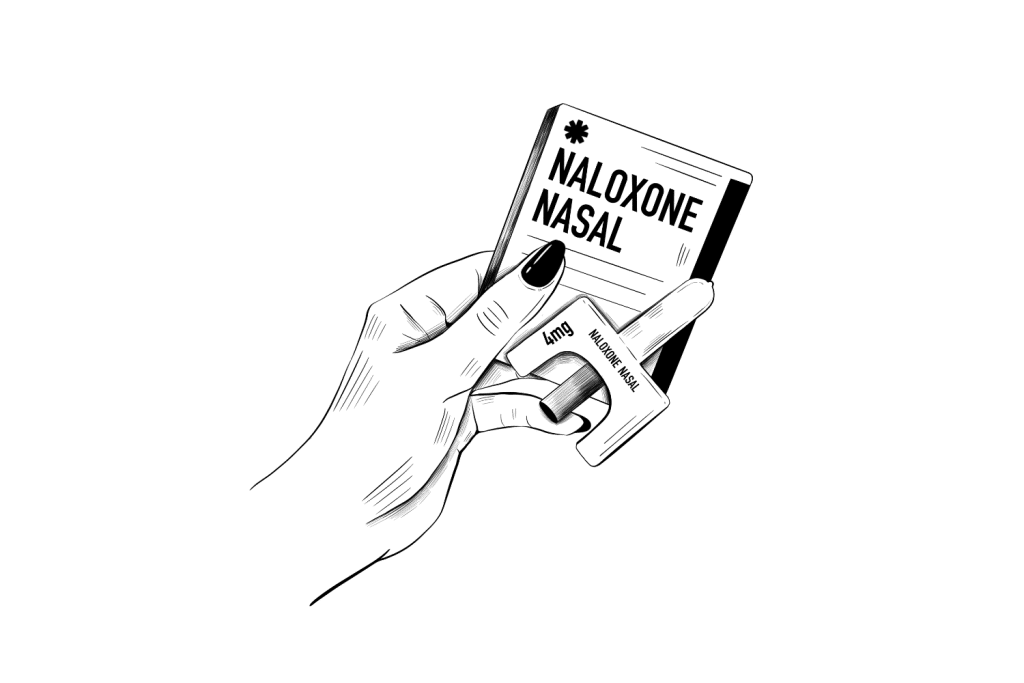
Fentanyl Test Strips and Narcan Distribution
Chicagoan, harm reduction advocate Laura Fry told me that she has found fentanyl in anything from counterfeit prescription pills to psychedelics. PWUD must have safe access to drug testing services for fentanyl and other contaminations.
Whenever a person accidentally consumes a drug contaminated with fentanyl, having Narcan — or its generic version, naloxone — on hand may be the difference between life and death. Naloxone is a powerful reversal agent for opioid overdose, working to clear the opioid receptors from any outside opiate drugs.
Additionally, fentanyl test strips are a powerful preventative measure. However, a person who uses fentanyl regularly along with other white powders like heroin or cocaine could accidentally mix up the two.
Having a backup plan for emergencies is a crucial element of safe use and naloxone saturation on the streets can save lives.
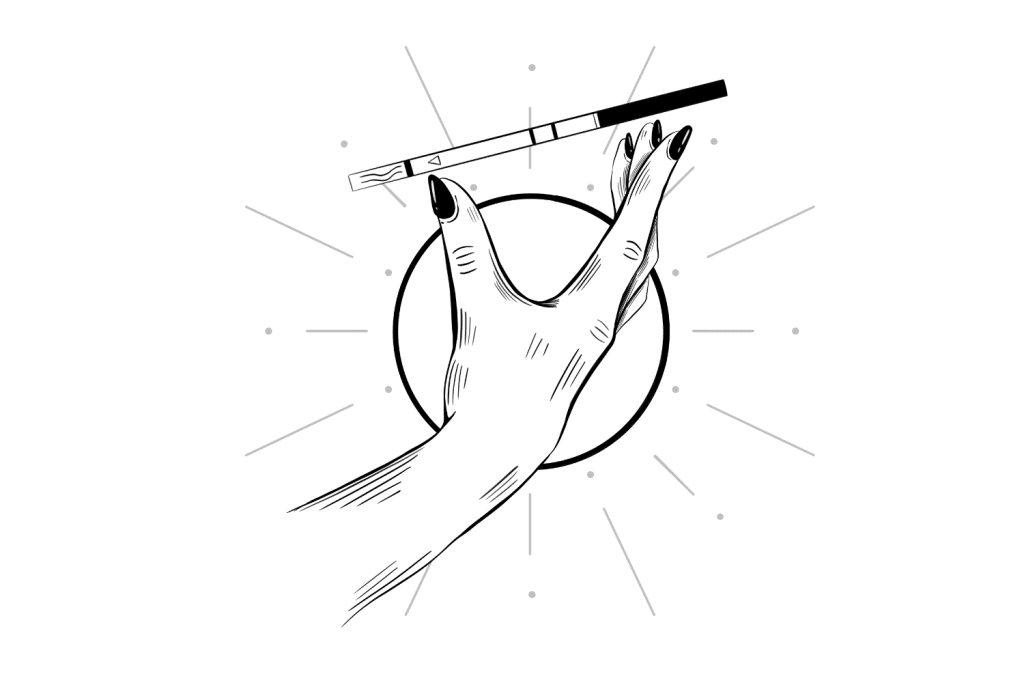
Evidence for Naloxone and Fentanyl Test Strips Distribution
A 2022 qualitative study of 29 PWUD in Philadelphia between January and May 2021 analyzed their motivations and patterns for using fentanyl test strips. Both relied heavily on education, access, and quality of testing strips, concluding:
To support increased use of [fentanyl test strips], distribution campaigns should be widespread geographically and provide enough strips to ensure availability for PWUD to test more frequently [1]
A separate report of the Council on Scientific Affairs touted the scientific evidence for needle exchange programs and methadone replacement therapies as effective harm reduction strategies [2].
The report also stated the following:
- “Neither strategy increases existing drug use nor leads to drug use initiation.”
- Substance dependence issues “should be treated primarily as a medical and public health rather than criminal justice issues”
- The biggest limitations of methadone programs are inadequate funding and research
Arming everyone willing with a life-saving antidote to an opioid disorder helps fight the potential for overdose. A systematic review of 19 scientific articles found bystanders — mainly other opioid users in the area — are capable and willing of administering naloxone to prevent an overdose.
The PWUD are always the first ones to take care of the PWUD. Let’s empower them to help their community instead of requiring them to leave it.
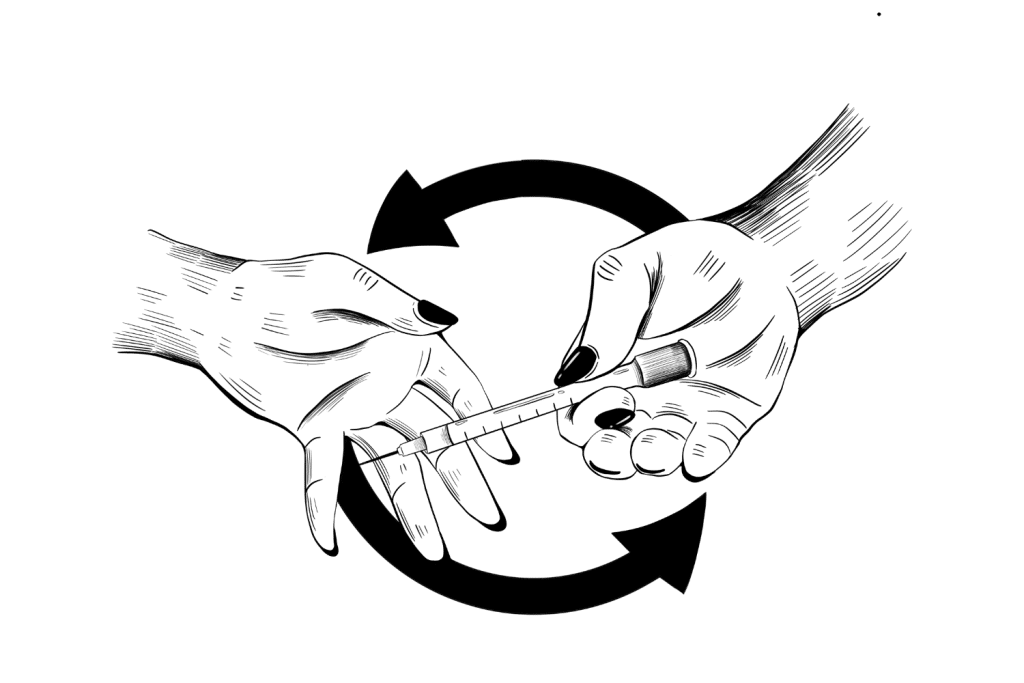
Needle Exchange Programs & Providing Smokeware
Needles-exchange programs often offer clean needles in exchange for dirty ones. Depending on the regulations in the state, PWUD may or may not receive needles without providing a dirty one.
While the intention of this is to keep dirty needles off the street, it also forces PWUD to carry around dirty needles when they could just as easily place them in an empty bottle and throw them out. Another limitation many states have is not allowing the distribution of glass pipes for smoking.
Needles are one of the most dangerous ways people can use drugs so it’s important to make them as widely available as possible. However, it’s also important to help people partake of their drug of choice in safer ways by ensuring they have access to the utensils they need for smoking.
Safe Injection Sites
Safe injection sites are locations for PWUDs to receive medical attention while they use drugs in the event of something going wrong. If a person is using a contaminated batch and experiences an overdose, trained staff can step in to help.
Currently, New York City has the only two state-sanctioned safe injection sites in the United States. Check out the successes supervisor Brian Hackel reports below after a year and a half.
And, throughout nearly a year and a half, over 15,000 uses, 1,000 enrolled participants, and 400 medical interventions in the Washington Heights OPC:
— Brian Hackel 💉❤️ ✊🏻🏳️🌈 (@Brian_A_Hackel) April 28, 2023
Not one heart has stopped.
(An odd “success metric”, but it is one)
If you’re still not convinced, there’s plenty more evidence for the effectiveness of safe consumption sites.
The Evidence for Safe Injection and Consumption Sites
A 2005 Canadian study two years after the first safer injection facility opened found PWUDs who utilized the service were 70% less likely to share needles [3]. This is one of the biggest potential harms of drug use, spreading infectious diseases, such as HIV and hepatitis C.
Two years later, the same publication found the fatal overdose rate within 500m of the site dropped 34% compared to just 9.3% in the rest of Vancouver [4]. The authors of the study conclude by urging the implementation of similar centers wherever “injection drug use is prevalent, particularly in areas with high densities of overdose.”
While the public may not care deeply about PWUD, as their values may not align, harm reduction is good for the community as well[5]. Five years after the opening of a safe consumption center in Australia, researchers contacted residents and business owners in the area and discovered:
- Consistent declines in seeing drug use in public
- Consistent declines in seeing discarded needles in public
- A slight decline in reports of people being offered drugs while staying mostly steady [6]
MOUD (Medications for Opioid Use Disorder)
MOUD is one of the most effective ways to transition off dependence on opioids. The most common forms of medication people use for this include:
- Methadone — One of the first forms of MAT available, methadone is a long-lasting, semi-potent opioid that can quell cravings to taper off dependency. A single dose will last for 24–36 hours.
- Buprenorphine — For less severe cases of opioid dependence, the partial against buprenorphine may be more effective. With a 36–48 hour half-life and a limit on the effects it can produce, it’s a great option for mild or moderate opiate withdrawal symptoms [7].
- Naltrexone — As a long-acting antagonist for opioid receptors, naltrexone blocks all action from outside opioids for up to 48 hours at a time. This doesn’t produce any of the euphoric effects of opioids and users have to wait at least 7 days from their last time using an opioid to take it.
- Suboxone — Three parts buprenorphine mixed with one part naloxone to prevent the subjective effects of the opioid. Unlike naltrexone, PWUDs only have to wait 12–24 hours from the last time using to take it.
Ideally, all of these could be reliable and readily available options for the broad spectrum of opioid-dependent PWUD.
The Evidence for MOUD
MOUD revolves around tapering off from dependence on certain drugs. A 2022 case-control study involving over 30,000 Medicare beneficiaries found those who didn’t utilize buprenorphine — a common medication for opioid dependence — were nearly 3 times more likely to experience an overdose [8].
This study came a few years after another peer-reviewed cohort study of more than 500 patients over 3 years. Here, researchers showed recipients of MAT were about half as likely to contract hepatitis C than those using nonopioid agonist forms of treatment [9].
The main tools for MOUD are methadone, buprenorphine, and suboxone to address opioid withdrawal. While the public thinks of withdrawal as something a person should have to tough out to break through their dependence, opioid withdrawal can be fatal [10].
Medications like these provide a safe path toward removing opioid dependence from someone’s life and removing the cravings and pain of withdrawal. Instead of quitting cold turkey and suffering the harmful effects of a painful withdrawal, they can taper off their dependence on opioids.
Safer Sex Education and Supplies
Educating people about safer sex and providing supplies is essential to preventing sexually transmitted infections. PWUD have sex just like the rest of us — sometimes in a transactional manner or otherwise not willing or enthusiastically.
Whether it’s for pleasure, money, or drugs, safe sex supplies can prevent the spread of disease, unwanted pregnancy, and education around consent. Additionally, by no longer treating the PWUD as unwanted criminals, we can empower them to come forward in instances of harassment and sexual assault.
Community organizations and health clinics and mobile screening services distribute safe sex supplies and offer testing for sexually transmitted diseases. Depending on the state, they may also offer abortion care or assist with finding it.
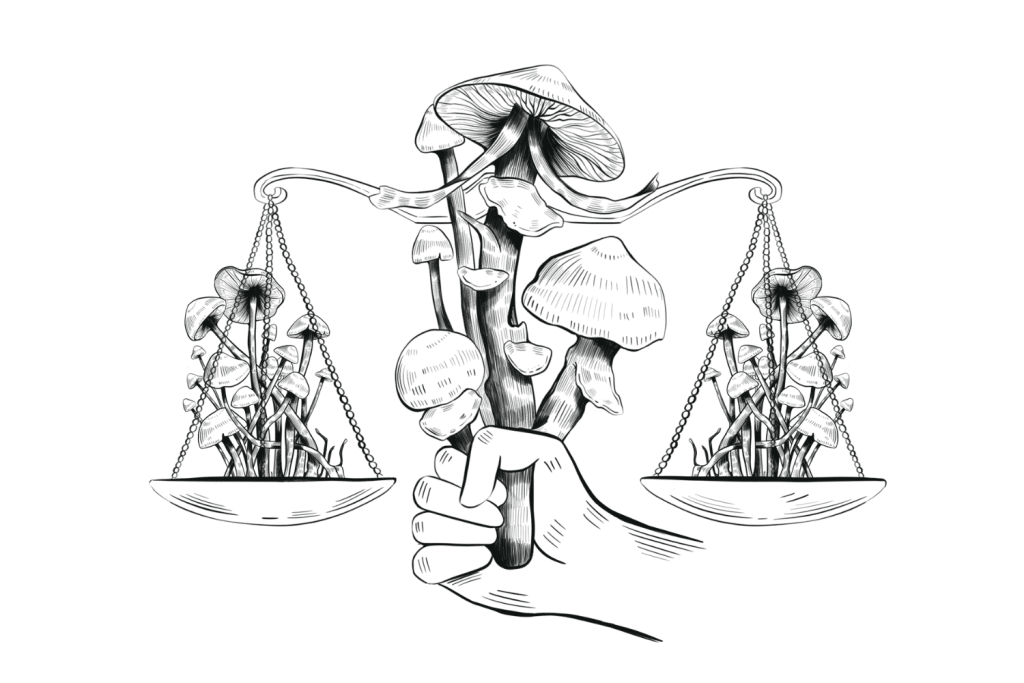
The Ultimate Harm Reduction Strategy: Legalization & Regulation
Decriminalization is the normal go-to for most places looking to institute a more health-focused approach to drug use. While it’s always a great thing to stop considering PWUD to be criminals, it stops short of addressing the actual concern — overdose deaths.
Safe consumption sites, drug testing centers, fentanyl test strips, and more could all become easier to access and less necessary if we legalized and regulated the production of drugs. Instead of drug users having to buy their substance of choice from a sketchy supplier, they could buy a product they know, trust, and understand.
As researchers noted in reviewing Portuguese policy 20 years after they decriminalized personal possession of all drugs:
[I]n Portugal, as in other countries with a prohibitionist approach, there are ‘victims’ originated, not necessarily by drug use in itself, but by drug laws … some of them with effective prison sentences – which, again, can be seen as a harm to human rights. A non-paternalistic mid-term view, that broadens the scope of public health to include, for instance, the right to an informed choice and the right to risk taking behaviour … might offer a possibility [11]
Importance of Harm Reduction in Public Health
We have to ask ourselves what is at the heart of our concern for drug users. If it’s control and authority, decriminalization makes sense. However, if our concern revolves around the health and well-being of drug users, we must work to implement harm reduction measures widely.
According to the Centers for Disease Control and Prevention, more than 107,000 people in the US succumbed to a fatal drug overdose in 2021. The stigma and barriers to harm reduction services — including cost and availability — are some of the problems we need to solve.
By applying harm reduction strategies, we can improve outcomes for PWUD and our communities as a whole — PWUD are your neighbors too. We can reduce overdose deaths, sexually transmitted infections and diseases, and unhealthy pregnancies.
This is a scientific fact (and, no, this is not an exaggeration.)
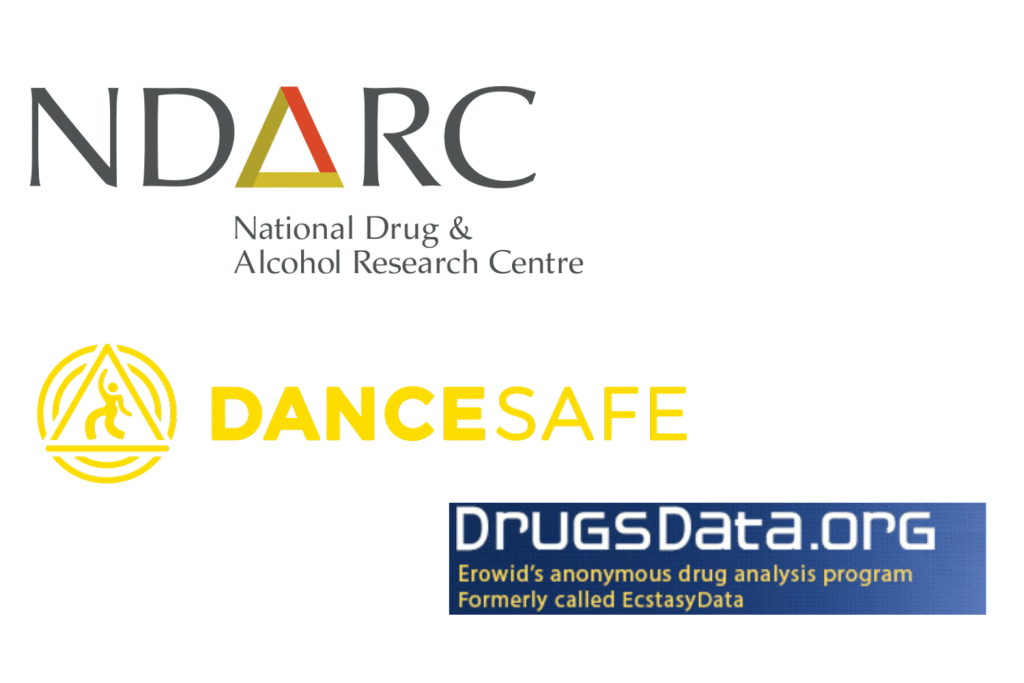
Key Figures and Organizations in Harm Reduction
Several organizations and individuals have played important roles in the harm reduction movement. Here is a non-exhaustive list.
- The PWUD Themselves — The oft-forgotten hero of harm reduction is the PWUD. It’s not uncommon for a person to experience an overdose when living in a community with other PWUD but there is often someone nearby, ready to help with naloxone. The government has never cared about PWUD and it’s always been on them to look
- DanceSafe — Specializes in drug checking and harm reduction during music festivals, concerts, raves, and other party-type situations. DanceSafe has been on the scene since 1998 and is a phenomenal resource for drug users in party situations.
- Dr. Alex Wodak — An early harm reduction advocate and Australian physician who established the first needle exchange program in Australia in 1986. He also helped establish the National Drug and Alcohol Research Centre and the Australian Society of HIV Medicine.
- Dr. Ingrid van Beek — The founding medical director of Australia’s first medically supervised injecting center from 2000 until 2008. She was also the director of the Kirketon Road Centre, one of the world’s most integrated targeted primary health care services for at-risk young people, sex workers, and people who inject drugs, until early 2017.
- DrugsData.org — Want to know what’s really in the batch of drugs you just bought? Drugsdata will test all drugs including pharmaceuticals through an anonymous mail-in service and publicly posts the results so you can search through them. This is a great way to test your drugs and see what else is going on in the drug market.
- Dan Bigg — The so-called “godfather of harm reduction,” Biggs founded the Chicago Recovery Alliance, which was the first in the US to distribute naloxone. Tragically, after saving “tens of thousands of lives, perhaps hundreds of thousands,” Biggs died of an overdose in 2018 but his foundation lives on.
- The North American Syringe Exchange Network (NASEN) — Find the nearest needle exchange in your area along with a host of other harm reduction services near you.
- Dr. Gabor Maté — A Canadian physician, author, and speaker who promotes harm-reduction approaches for addiction treatment. Maté focuses on the root causes of addiction, such as trauma and pain, and works with patients on mindfulness and compassion-based therapy.
- Local Harm Reduction Organizations — Right now, somebody near you is putting boots on the ground in combatting the crisis of drug overdoses. No national organization will ever do the level of good people near you can do by simply passing out clean supplies to the PWUD.
The History of Harm Reduction
As one report puts it, “The USA has a long tradition of moralistic condemnation of intoxication with psychoactive drugs (including licit drugs like alcohol) [12].” However, the introduction of acquired immunodeficiency syndrome (AIDS) in the early 80s lead to many seeking out a different course of action.
As the disease spread through the country, people began realizing it was more important to educate people on healthy ways to consume their drugs than to talk down to them about it. Starting first in Amsterdam and spreading through different parts of the UK, a pilot syringe exchange service finally landed in New York City in 1989 after defeating stiff opposition.
One thread running through successful harm-reduction efforts is fixing problems that — as one study puts it — “impacted white communities in middle-class suburbs.” Before the HIV/AIDS crisis was taking root, opioid crises had broken out in the 60s and 70s and were met with bitter media responses instead of calls to institute harm reduction measures.
As the first needle-exchange services were opening in New York, the so-called “crack epidemic” was taking over the nightly news. The government’s response was to increase the penalty for crack cocaine to 100x that of powder cocaine.
Powder cocaine — fueling unfathomable office days on Wall Street among white bankers in the 80s — didn’t get the same treatment. Additionally, movements rarely (if ever) offered smoking paraphernalia to encourage people to smoke their crack instead of injecting it.
As we move forward in the struggle for harm reduction, we have to keep these past missteps in mind and ensure we’re setting out to help all of our fellow drug users. Today, a movement is brewing for the legalization of drugs and the implementation of a system that can help.
Saving Lives & Building Healthier Communities, One Step at a Time
Harm reduction is a crucial component of any public health response to drug dependence. Principles of pragmatism and meeting people where they are along with strategies like overdose prevention education, safe injection sites, and MOUD can create a tangible difference in the lives of PWUD.
People have been using drugs for as long as there have been people. If there was a chance a government could strong-arm its way into stopping that, at least one of them would have succeeded by now.
Instead, America sits $1 trillion and 50 years into a futile war on substances. We trust adults to be adults when it comes to alcohol, caffeine, nicotine, marijuana (in some states), and more.
Why, then, would we not trust the people who have had to use drugs in private and find a community and information among people the government has intentionally oppressed to handle their substances?
As research and evidence continue to grow in support of harm reduction strategies, it is essential to continue to advocate for these programs and services in the public sphere. Furthermore, we must ensure we are stepping outside of the problems affecting just white people and extend an arm to all PWUD across the spectrum.
Harm reduction looks different for every person and every substance but reducing harm at all always improves health. As states like Oregon and Canadian cities like Vancouver begin experimenting with legalization, we’ll have to keep watch and hope it spreads through the rest of the world.
References
- Reed, M. K., Guth, A., Salcedo, V. J., Hom, J. K., & Rising, K. L. (2022). “You can’t go wrong being safe”: Motivations, patterns, and context surrounding the use of fentanyl test strips for heroin and other drugs. The International Journal on Drug Policy, 103, 103643. https://doi.org/10.1016/j.drugpo.2022.103643
- Yoast, R., Williams, M. A., Deitchman, S. D., & Champion, H. C. (2001). Report of the Council on Scientific Affairs: Methadone maintenance and needle-exchange programs to reduce the medical and public health consequences of drug abuse. Journal of Addictive Diseases, 20(2), 15–40. https://doi.org/10.1300/J069v20n02_03
- Kerr, T., Tyndall, M., Li, K., Montaner, J., & Wood, E. (2005). Safer injection facility use and syringe sharing in injection drug users. Lancet (London, England), 366(9482), 316–318. https://doi.org/10.1016/S0140-6736(05)66475-6
- Marshall, B. D. L., Milloy, M.-J., Wood, E., Montaner, J. S. G., & Kerr, T. (2011). Reduction in overdose mortality after the opening of North America’s first medically supervised safer injecting facility: A retrospective population-based study. Lancet (London, England), 377(9775), 1429–1437. https://doi.org/10.1016/S0140-6736(10)62353-7
- Tran, V., Reid, S. E., Roxburgh, A., & Day, C. A. (2021). Assessing Drug Consumption Rooms and Longer Term (5 Year) Impacts on Community and Clients. Risk Management and Healthcare Policy, 14, 4639–4647. https://doi.org/10.2147/RMHP.S244720
- Salmon, A. M., Thein, H.-H., Kimber, J., Kaldor, J. M., & Maher, L. (2007). Five years on: What are the community perceptions of drug-related public amenity following the establishment of the Sydney Medically Supervised Injecting Centre? The International Journal on Drug Policy, 18(1), 46–53. https://doi.org/10.1016/j.drugpo.2006.11.010
- Whelan, P. J., & Remski, K. (2012). Buprenorphine vs methadone treatment: A review of evidence in both developed and developing worlds. Journal of Neurosciences in Rural Practice, 3(1), 45–50. https://doi.org/10.4103/0976-3147.91934
- Gibbons, J. B., McCullough, J. S., Zivin, K., Brown, Z. Y., & Norton, E. C. (2022). Association Between Buprenorphine Treatment Gaps, Opioid Overdose, and Health Care Spending in US Medicare Beneficiaries With Opioid Use Disorder. JAMA Psychiatry, 79(12), 1173–1179. https://doi.org/10.1001/jamapsychiatry.2022.3118
- Tsui, J. I., Evans, J. L., Lum, P. J., Hahn, J. A., & Page, K. (2014). Association of Opioid Agonist Therapy With Lower Incidence of Hepatitis C Virus Infection in Young Adult Injection Drug Users. JAMA Internal Medicine, 174(12), 1974–1981. https://doi.org/10.1001/jamainternmed.2014.5416
- Shah, M., & Huecker, M. R. (2023). Opioid Withdrawal. In StatPearls [Internet]. StatPearls Publishing. https://www.ncbi.nlm.nih.gov/books/NBK526012/
- Rego, X., Oliveira, M. J., Lameira, C., & Cruz, O. S. (2021). 20 years of Portuguese drug policy—Developments, challenges and the quest for human rights. Substance Abuse Treatment, Prevention, and Policy, 16(1), 59. https://doi.org/10.1186/s13011-021-00394-7
- Des Jarlais, D. C. (2017). Harm reduction in the USA: The research perspective and an archive to David Purchase. Harm Reduction Journal, 14(1), 51. https://doi.org/10.1186/s12954-017-0178-6

